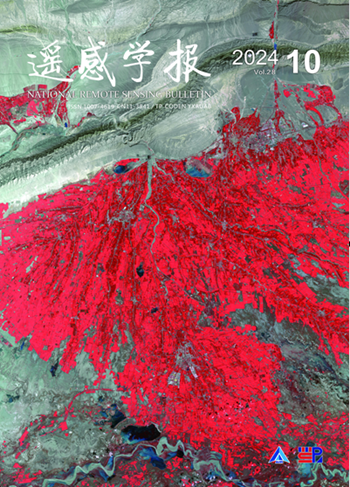Regional Sampling of Forest Canopy Covers Using UAV Visible Stereoscopic Imagery for Assessment of Satellite-Based Products in Northeast China
引用次数: 3
Abstract
Canopy cover is an important parameter affecting forest succession, carbon fluxes, and wildlife habitats. Several global maps with different spatial resolutions have been produced based on satellite images, but facing the deficiency of reliable references for accuracy assessments. The rapid development of unmanned aerial vehicle (UAV) equipped with consumer-grade camera enables the acquisition of high-resolution images at low cost, which provides the research community a promising tool to collect reference data. However, it is still a challenge to distinguish tree crowns and understory green vegetation based on the UAV-based true color images (RGB) due to the limited spectral information. In addition, the canopy height model (CHM) derived from photogrammetric point clouds has also been used to identify tree crowns but limited by the unavailability of understory terrain elevations. This study proposed a simple method to distinguish tree crowns and understories based on UAV visible images, which was referred to as BAMOS for convenience. The central idea of the BAMOS was the synergy of spectral information from digital orthophoto map (DOM) and structural information from digital surface model (DSM). Samples of canopy covers were produced by applying the BAMOS method on the UAV images collected at 77 sites with a size of about 1.0 km2 across Daxing’anling forested area in northeast of China. Results showed that canopy cover extracted by the BAMOS method was highly correlated to visually interpreted ones with correlation coefficient (r) of 0.96 and root mean square error (RMSE) of 5.7%. Then, the UAV-based canopy covers served as references for assessment of satellite-based maps, including MOD44B Version 6 Vegetation Continuous Fields (MODIS VCF), maps developed by the Global Land Cover Facility (GLCF) and by the Global Land Analysis and Discovery laboratory (GLAD). Results showed that both GLAD and GLCF canopy covers could capture the dominant spatial patterns, but GLAD canopy cover tended to miss scattered trees in highly heterogeneous areas, and GLCF failed to capture non-tree areas. Most important of all, obvious underestimations with RMSE about 20% were easily observed in all satellite-based maps, although the temporal inconsistency with references might have some contributions.利用无人机可见立体图像对中国东北地区林冠覆盖物进行区域采样以评估卫星产品
冠层覆盖是影响森林演替、碳通量和野生动物栖息地的重要参数。已经根据卫星图像制作了几张具有不同空间分辨率的全球地图,但在准确性评估方面缺乏可靠的参考资料。配备消费级相机的无人机的快速发展使得能够以低成本获取高分辨率图像,这为研究界提供了一个收集参考数据的有前景的工具。然而,由于光谱信息有限,基于无人机的真实彩色图像(RGB)区分树冠和林下绿色植被仍然是一个挑战。此外,从摄影测量点云导出的树冠高度模型(CHM)也被用于识别树冠,但受到林下地形高程不可用的限制。本研究提出了一种基于无人机可见图像区分树冠和林下的简单方法,为方便起见,称为BAMOS。BAMOS的核心思想是来自数字正射影像图(DOM)的光谱信息和来自数字表面模型(DSM)的结构信息的协同作用。通过对在77个大小约为1.0的地点收集的无人机图像应用BAMOS方法,制作了树冠覆盖物样本 中国东北部大兴安岭林区,面积平方公里。结果表明,BAMOS方法提取的冠层覆盖与视觉解释的冠层覆盖高度相关,相关系数(r)为0.96,均方根误差(RMSE)为5.7%,全球土地覆盖设施(GLCF)和全球土地分析与发现实验室(GLAD)开发的地图。结果表明,GLAD和GLCF冠层覆盖都能捕捉到主导的空间模式,但GLAD冠层覆盖往往会错过高度异质性区域的零散树木,而GLCF未能捕捉到非树木区域。最重要的是,在所有基于卫星的地图中都很容易观察到RMSE约20%的明显低估,尽管与参考文献的时间不一致可能有一些贡献。
本文章由计算机程序翻译,如有差异,请以英文原文为准。
求助全文
约1分钟内获得全文
求助全文
来源期刊

遥感学报
Social Sciences-Geography, Planning and Development
CiteScore
3.60
自引率
0.00%
发文量
3200
期刊介绍:
The predecessor of Journal of Remote Sensing is Remote Sensing of Environment, which was founded in 1986. It was born in the beginning of China's remote sensing career and is the first remote sensing journal that has grown up with the development of China's remote sensing career. Since its inception, the Journal of Remote Sensing has published a large number of the latest scientific research results in China and the results of nationally-supported research projects in the light of the priorities and needs of China's remote sensing endeavours at different times, playing a great role in the development of remote sensing science and technology and the cultivation of talents in China, and becoming the most influential academic journal in the field of remote sensing and geographic information science in China.
As the only national comprehensive academic journal in the field of remote sensing in China, Journal of Remote Sensing is dedicated to reporting the research reports, stage-by-stage research briefs and high-level reviews in the field of remote sensing and its related disciplines with international and domestic advanced level. It focuses on new concepts, results and progress in this field. It covers the basic theories of remote sensing, the development of remote sensing technology and the application of remote sensing in the fields of agriculture, forestry, hydrology, geology, mining, oceanography, mapping and other resource and environmental fields as well as in disaster monitoring, research on geographic information systems (GIS), and the integration of remote sensing with GIS and the Global Navigation Satellite System (GNSS) and its applications.
 求助内容:
求助内容: 应助结果提醒方式:
应助结果提醒方式:


